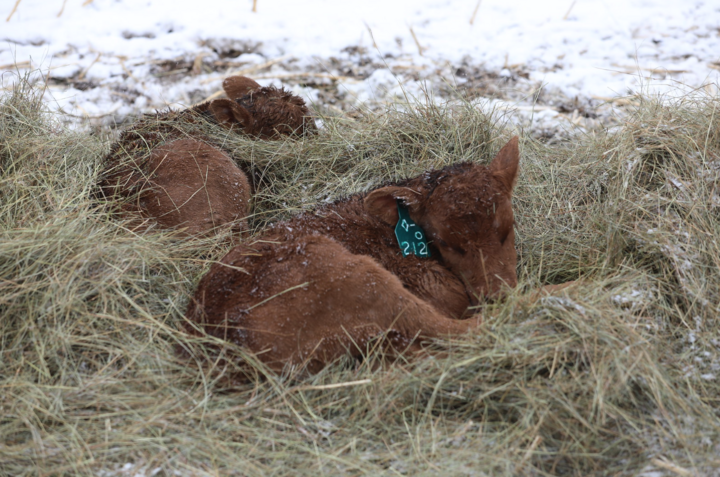A simple management strategy—feeding cows at dusk—could increase the number of calves born during the day. It’s easier to watch cattle and see if intervention is necessary while it’s light out. Producers can also keep an eye on calves and make sure they’re getting a healthy start during the day when it’s warmer and easier to manage both cows and calves.
To program beef females so the majority calve during the day, begin feeding at dusk two to three weeks before the start of the calving season.
We aren’t sure exactly what triggers a cow to calve, but it likely has a hormonal connection. Studies have shown that rumen contractions increase in frequency just after feeding, but slow down a few hours before a cow starts to calve. Pressure in the rumen drops during the last two weeks of gestation and declines faster during calving, indicating calving is triggered when rumen pressure is lower. Feeding at night may cause this pressure to rise at night and decline in the daytime, which has been suggested to be part of the reason night-feeding increases instances of day-calving.
Several data sets support that feeding pregnant cows at dusk will increase the number of cows calving during the daytime. In Canadian and British studies, feeding later in the day resulted in 79% of the cows calving during the daytime. In field trials by cattlemen when cows and heifers were fed once daily between 5 p.m. and 7 p.m., 74.5% of the calves were born between 5 a.m. and 5 p.m. In the most convincing study, 1,331 cows on 15 farms in Iowa, cows were fed once daily at dusk and 85% of the calves were born between 6 a.m. and 6 p.m.
Calving time is a labor-intensive and stressful time for producers, so having more cows calve during the daylight hours can reduce the stress on the calving crew.

